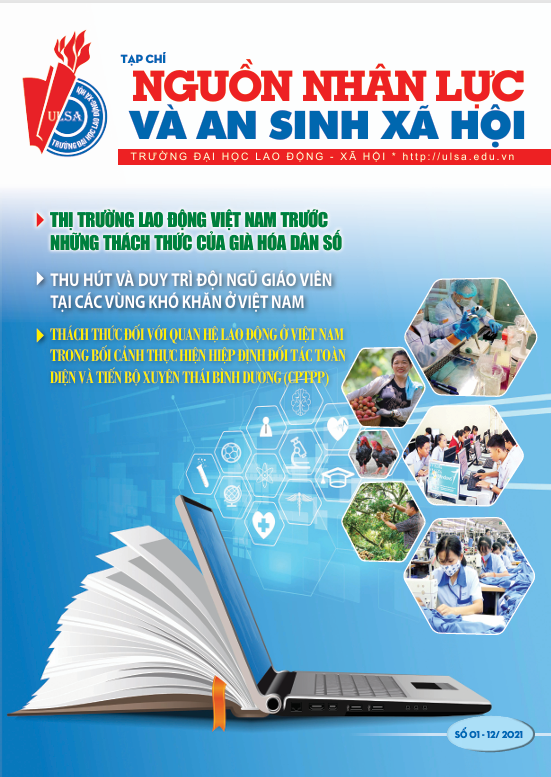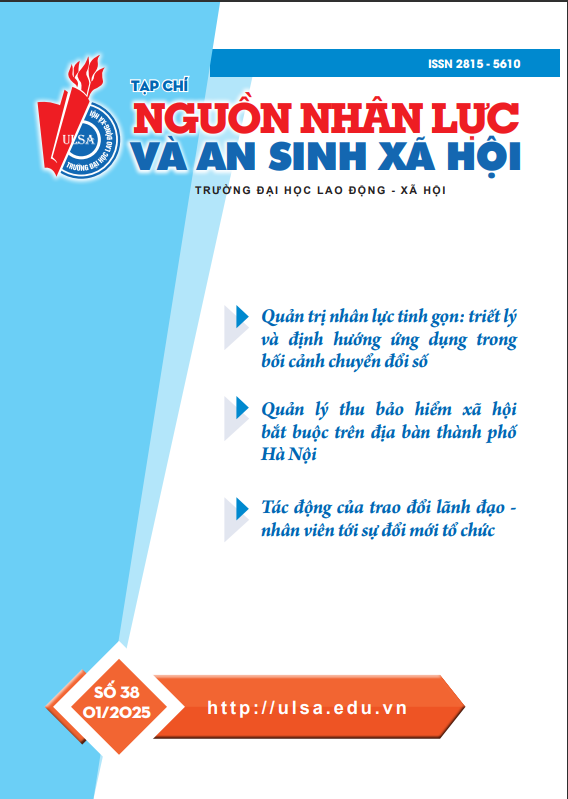Kết cấu và các thành phần nội dung của bài báo
1. Tên bài báo (Title)
Tên bài báo cần phải ngắn gọn (không nên quá 20 chữ/words), rõ ràng và phải phản ánh nội dung chính của bài báo. Tên bài báo phải viết chữ in hoa, cỡ chữ 12, in đậm, căn giữa trang. Tên bài báo gồm 2 phần tiếng Việt và tiếng Anh
2. Tên tác giả, cơ quan công tác, địa chỉ email (Trường hợp có nhiều tác giả cũng nêu đầy đủ)
3. Tóm tắt bài viết (Abstract)
Phần tóm tắt bài báo gồm 2 phần tiếng Việt và tiếng Anh. Tóm tắt bằng Tiếng Việt có độ dài từ 200 đến 250 từ, phản ánh khái quát những nội dung chính trong bài báo và thể hiện rõ những kết quả, đóng góp, điểm mới của bài báo.
4. Từ khóa (Keywords)
Từ khóa là những từ được cho là quan trọng đối với nội dung nghiên cứu đặc trưng cho chủ đề của bài viết đó. Tác giả đưa ra một số từ khóa (khoảng 3 - 6 từ khóa) của bài viết và sắp xếp theo thứ tự Alphabet. Từ khóa có cỡ chữ 12, chữ thường, cách mỗi từ là dấu; Từ khóa gồm 2 phần tiếng Việt và Tiếng Anh.
5. Nội dung bài báo
5.1. Giới thiệu hoặc Đặt vấn đề (Introduction)
Phần này cần trình bày:
• Lý do thực hiện nghiên cứu và tầm quan trọng của chủ đề nghiên cứu (có ý nghĩa như thế nào về mặt lý luận và thực tiễn);
• Xác định vấn đề nghiên cứu;
• Nội dung chính mà bài báo sẽ tập trung giải quyết.
5.2 Tổng quan nghiên cứu và/hoặc Cơ sở lý thuyết (Literature review and/or Theoretical framework)
• Tổng hợp các công trình nghiên cứu có liên quan để qua đó chỉ ra khoảng trống nghiên cứu (research gap);
• Và/hoặc Cơ sở lý thuyết liên quan; và khung lý thuyết hoặc khung phân tích sử dụng trong bài.
5.3. Phương pháp nghiên cứu (Methodology)
Tác giả có thể lựa chọn phương pháp nghiên cứu định tính hoặc định lượng, hoặc cả hai tùy theo cách tiếp cận mà mình lựa chọn, trong đó cần thể hiện mô hình và các giả thuyết nghiên cứu (nghiên cứu định lượng) và/hoặc thiết kế nghiên cứu định tính. Trong phần này, cách thức thu thập dữ liệu cần được chỉ ra.
5.4. Kết quả và thảo luận (Results and Discussion)
Tác giả bài báo cần:
• Diễn giải, phân tích các kết quả phát hiện trong nghiên cứu;
• Rút ra mối quan hệ chung, mối liên hệ giữa kết quả nghiên cứu của tác giả với những phát hiện khác trong các nghiên cứu trước đó.
Đối với một số dạng bài báo mang tính chất tư vấn, phản biện chính sách, ý kiến chuyên gia ... phần này có thể chỉ tập trung vào đánh giá thực trạng vấn đề nghiên cứu (đánh giá thành tựu, hạn chế và nguyên nhân).
5.5. Kết luận hoặc/và giải pháp/khuyến nghị/hàm ý (Conclusions or/and solutions/suggestions/implications)
Tùy theo mục tiêu nghiên cứu, bài báo cần có kết luận và đưa ra giải pháp hay khuyến nghị cho các nhà quản lý doanh nghiệp và/hoặc các nhà hoạch định chính sách xuất phát từ kết quả nghiên cứu.
6. Tài liệu tham khảo (Reference)
Liệt kê tất cả tài liệu đã được tác giả trích dẫn trong bài báo. Tài liệu tham khảo cần được trình bày theo hình thức trích dẫn được quy định cụ thể ở Điều 18.
Bài báo mới nhất
Trịnh Thùy Giang, Phạm Thị Linh, Trần Thị Thùy Doan
Tran Thi Mai Phuong, Ngo Quynh An


